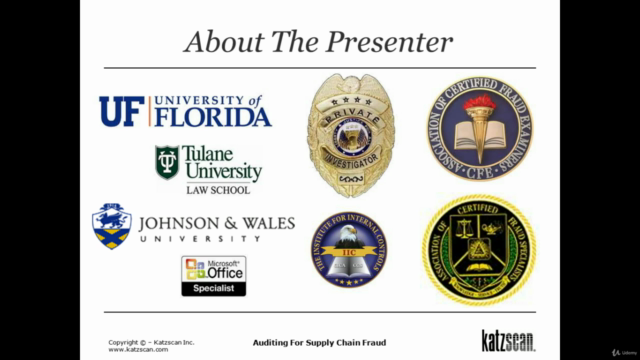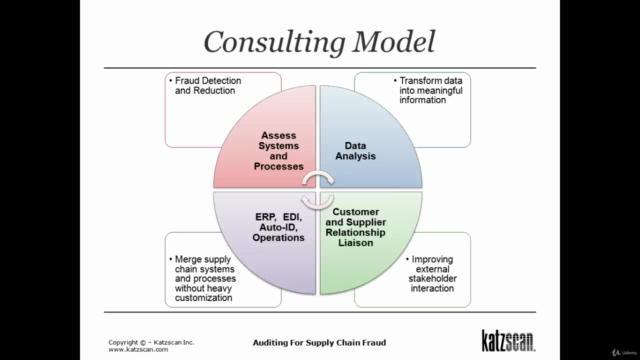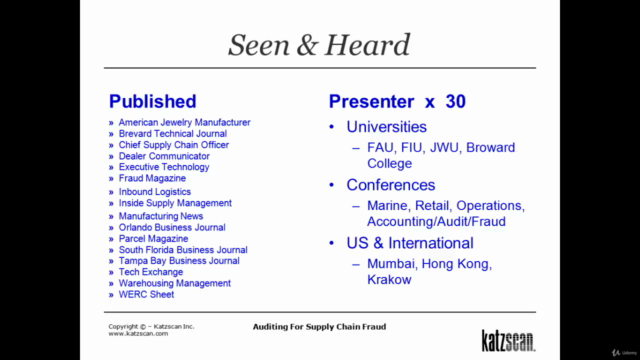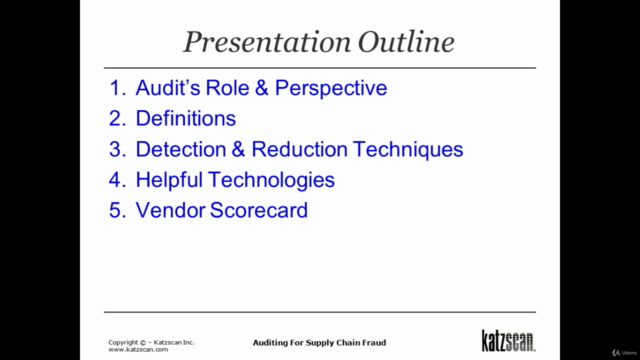Internal Auditing For Supply Chain Fraud
This course discusses ways to unite operational process improvement with risk management to reduce risk due to fraud.
3.63 (4 reviews)

12
students
1 hour
content
Oct 2020
last update
$19.99
regular price
What you will learn
Illustrate the enterprise’s true control over its supply chain.
List the tried-and-true supply chain technologies that are widely used and can be deployed for fraud detection.
Visualize how available supply chain technologies can be used together to create a check-and-balance transaction audit for detecting fraud.
Compare your enterprise to industry statistics on audit technologies and fraud detection.
Screenshots




Related Topics
1348624
udemy ID
9/12/2017
course created date
2/10/2021
course indexed date
Bot
course submited by